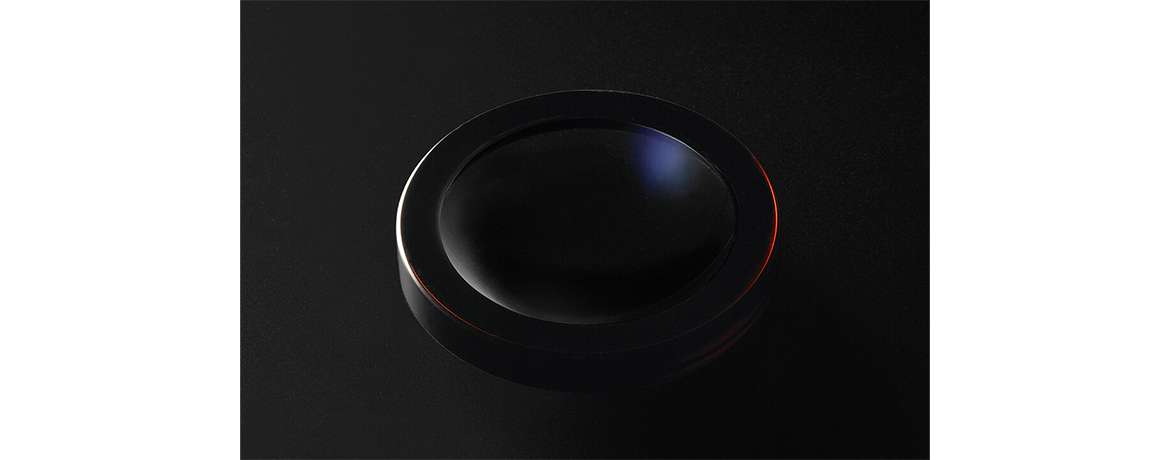
Lens surface coatings are thinner than visible wavelengths of light. Canon uses an evaporating deposition method known as “evaporated film coating” to coat the lens surface with an ultra-thin layer that reduces reflection from the lens surface and boosts light penetration, in order to minimize lens flare and ghosting. However, the anti-reflective properties of evaporated film coatings tend to decrease as the incident angle of light entry and exit becomes sharper. Therefore, to improve imaging performance further, it is necessary to find even more effective ways to restrict light reflection. Since evaporated film coating had reached the limits of effectiveness, Canon had reached an impasse in the development of new optical arrays.
The technological breakthrough that took anti-reflective film coatings to the next level is known as Subwavelength Structure Coating (SWC). This technology makes it possible to control lens flare and ghosting even on lens surfaces that previously could not be suppressed with evaporated film coating. The anti-reflective principle underlying SWC is based on continuous variation of the refractive index. Reflections from the lens surface are caused by the differential between the refractive index of glass and that of air. By placing a layer of material with a continuously varying refractive index between the glass and the air, it is possible to smooth the transition of light from air to glass or from glass to air, thus minimizing reflection.
The solution was discovered in nature: The eyes of a fly are covered with minute (nanometer-scale*) convex-concave protuberances. This structure forms a layer with a very low refractive index, effectively preventing reflection. Canon technicians studied this principle in great detail, through extensive trial-and-error experiments, until they finally succeeded in developing a revolutionary coating technology that deposits a layer on the lens surface with nanometer-level structure. This consists of protrusions on the lens surface that are just 200-400nm in size, smaller than visible wavelengths of light (approx. 400-700nm). The layer is deposited evenly across the lens surface with the protrusions exposed to the air. This produces a gradual variation in the refractive index from the tip of the coating to its base, effectively absorbing incident light and guiding it through the lens surface. This revolutionary technology was first used in the EF24mm f/1.4L II USM lens, opening a new frontier in wide-angle lens performance.
*1nm=1 millionth of a millimeter